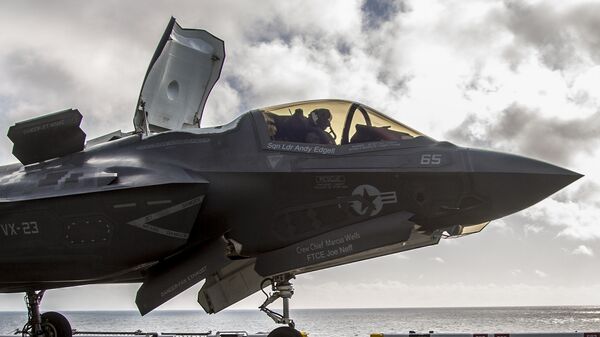The Short Takeoff and Vertical Lift (STOVL) variant F-35 was first tested at NAS Patuxent River for use on the Royal Navy’s Queen Elizabeth-class carriers and Italy’s Cavour-class carriers in 2015, according to FoxTrotAlpha. The main purpose of the ski jumps is to allow for higher operating weights and thus the ability to carry more weapons during flight, the defense news outlet reported. Ski jumps “squeeze the very most out of STOVL aircraft” like the F-35B and Harrier.
Phase 2 testing kicked off in June on land, according to IHS Jane’s. Queen Elizabeth-class aircraft carriers will start testing F-35B ski ramp takeoffs in 2018, and military planners expect the takeoff system to reach full operational capability by 2020.
The second round of testing entails more nuanced launch conditions than the first round of trials. For example, pilots will evaluate launching from the ski lifts at different speeds.
“The jet performed as expected and it was a real pleasure,” BAE Systems pilot Pete Wilson said when the F-35B completed its first ski jump in 2015. Testing the F-35B ski-jump takeoff removes risk for launches on carriers by providing “valuable” data, Wilson said at the time, according to the UK Ministry of Defense.
Launching from ski ramps requires less thrust than lifting off decks without ramps, therefore facilitating heavier weapons loads on jets. The Soviet-built Liaoning aircraft carrier operated by the Chinese navy has a comparable lip to assist flight operations.



